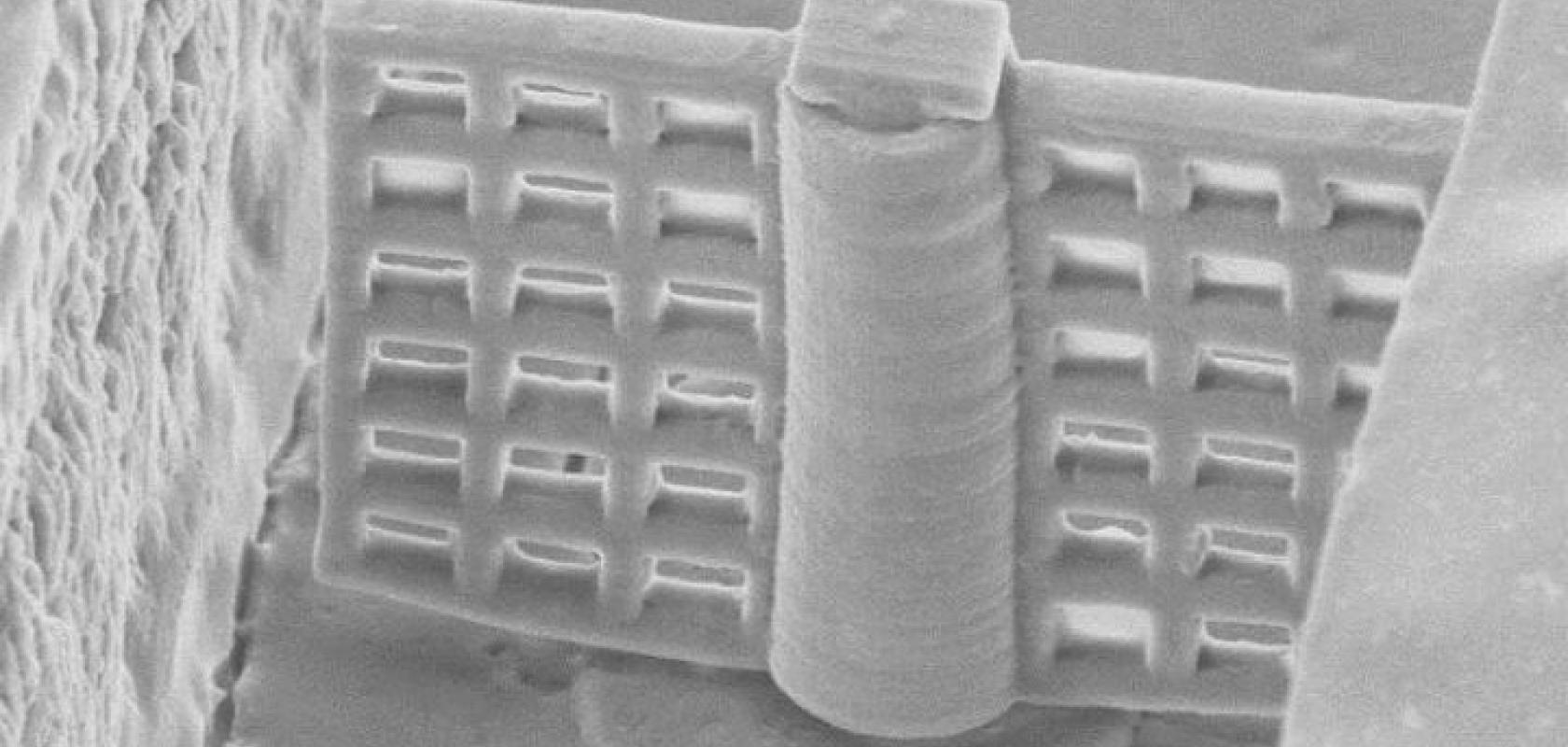A femtosecond laser has been used to 3D print a magnetically driven rotary microfilter that could be used to sort particles inside a re-usable microfluidic device.
The microfilter was developed with a specially developed magnetic material using a very precise 3D printing technique: two-photon polymerisation.
Microfluidic devices, also known as lab-on-a-chip devices, can be used to perform multiple laboratory functions inside a chip that usually measures a few square centimetres or less.
These devices contain intricate networks of microfluidic channels and are becoming increasingly complex. They may be useful for a variety of applications such as screening molecules for therapeutic potential or performing blood tests that detect disease.
Filters with micrometre-sized holes are often used in microfluidic chips as a passive way to sort particles or cells based on sizes of the holes. However, because the number and shape of holes in the filter cannot be dynamically changed, available devices lack the flexibility to sort different types of particles or cells on demand.
To expand the usefulness of microfluidic devices, a collaboration of researchers have developed a filter that can freely switch between modes such as selective filtering and passing.
In Optics Letters, the researchers, from the University of Science and Technology of China, the Hefei University of Technology and the Riken Center for Advanced Photonics in Japan, have shown that their new microfilters can sort particles in a microfluidic device with high performance.
‘By changing the direction of an external magnetic field, the microfilter we made can be remotely manipulated on demand to either filter certain-sized particles or to allow them all to pass,’ said Dong Wu of the University of Science and Technology of China. ‘This functionality could be used for many types of chemical and biological studies performed in lab-on-a-chip devices and, importantly, makes it possible for the chips to be re-used.’
To filter larger particles, a magnetic field perpendicular to the microchannel can be applied. After the filtering process is complete, the large particles can be released by applying a magnetic field that is parallel to the microchannel, which will rotate the microfilter by 90°. The filtering process can then be repeated as needed.
‘This filter could eventually be used to sort cells of different sizes for applications such as isolating circulating tumor cells for analysis or detecting abnormally large cells that may indicate disease,’ added Chaowei Wang, also from University of Science and Technology of China. ‘With further development it might even be possible to use it in devices placed inside the body for cancer detection.’
Printing with precision
The new filter was created using two-photon polymerisation, which uses a focused femtosecond laser beam to solidify, or polymerise, a liquid light-sensitive material known as photoresist. Two-photon absorption enables the polymerisation to be done in a very precise manner, enabling the fabrication of complex structures on the micron scale. To enable the microfilter to be driven magnetically, the researchers synthesised magnetic nanoparticles and mixed them with the photoresist.
Fabrication required the researchers to optimise the laser power density, the number of pulses and the scanning intervals used for polymerisation.
After testing its magnetically driven properties on a glass slide, they integrated the microfilter into a microfluidic device.
The researchers verified the filtering performance of the filter using polystyrene particles with diameters of 8.0 and 2.5μm that were mixed in an alcohol solution. ‘It was clear that particles smaller than the pore size easily passed through microfilter while bigger ones were filtered out,’ said Chenchu Zhang, another researcher from the University of Science and Technology of China. ‘When in passing mode, any larger particles captured by the filter were washed away with the fluid, which prevents filter clogging and allows reuse of the microfilter.’


